Prevention of Blowout Tests in Large-Diameter Boreholes with Soundless Chemical Demolition Agents and Fracturing Characteristics of Hard Sandstones
Abstract
:1. Introduction
2. Blowhole Mechanism and SCDA Blowhole Prevention Method
2.1. Characteristics and Mechanism of the Blowhole
2.2. Anti-Blowout Mechanism and Anti-Blowout Effect of the ICBPM
3. Expansion Performance Test of the ICBPM
3.1. Expansion Performance Test
3.2. Test Results and Analyses
4. ICBPM Rock-Breaking Performance Test
4.1. Test Scheme
4.2. Cumulative Count Results and Analysis
4.3. Spatial and Temporal Evolution Characteristics of the Acoustic Emission
4.4. Temperature and Strain Monitoring Results and Analysis
5. Discussion
5.1. Influence of Injection Volume on Expansion Properties
5.2. Effect of Pore Size on the Ability to Break Rock
6. Conclusions
- (1)
- The ICBPM displays a good anti-blowout effect and favorable expansion performance. The water injection coefficient is introduced to evaluate the expansion performance of the cooling method. When the coefficient is 0.14, the blowhole prevention effect and the expansion performance are improved, and the expansion pressure is 49.0 MPa, which is considered eligible for rock-crushing operations.
- (2)
- The fracture test verified the rock-crushing performance of the ICBPM. The minimum line of resistance significantly influences the direction of fracture extension, and all fractures appear in the free surface at the location of the minimum line of resistance. The fracture pattern shows a Y-shape distribution, and the fracture direction can be effectively identified using the strain monitoring method. The results are insightful for the directional fracturing of rock.
- (3)
- The application of the ICBPM largely reduces the expansion reaction time, and increasing the pore size exponentially increases its rock-crushing performance. In addition, the experimental environment reflects appropriate engineering conditions. Considering these advantages, this method has great engineering significance.
Author Contributions
Funding
Data Availability Statement
Conflicts of Interest
References
- Cho, H.; Nam, Y.; Kim, K.; Lee, J.; Sohn, D. Numerical simulations of crack path control using soundless chemical demolition agents and estimation of required pressure for plain concrete demolition. Mater. Struct. 2018, 51, 169. [Google Scholar] [CrossRef]
- Shang, J.; Zhao, Z.; Aliyu, M.M. Stresses induced by a demolition agent in non-explosive rock fracturing. Int. J. Rock Mech. Min. 2018, 107, 172–180. [Google Scholar] [CrossRef]
- Natanzi, A.S.; Laefer, D.F.; Zolanvari, S.M.I. Selective demolition of masonry unit walls with a soundless chemical demolition agent. Constr. Build. Mater. 2020, 248, 118635. [Google Scholar] [CrossRef]
- Zheng, W.Z.; Li, R.S.; Xu, L.B.; Hou, X.M. Review and analysis on research and application of static crushing technology. J. Harbin Inst. Technol. 2021, 53, 190–200. [Google Scholar] [CrossRef]
- Gambatese, J.A. Controlled Concrete Demolition Using Expansive Cracking Agents. J. Constr. Eng. Manag. 2003, 129, 98–104. [Google Scholar] [CrossRef]
- De Silva, V.R.S.; Ranjith, P.G. A study of rock joint influence on rock fracturing using a static fracture stimulation method. J. Mech. Phys. Solids 2020, 137, 103817. [Google Scholar] [CrossRef]
- Xu, S.; Hou, P.; Li, R.; Cai, M. An Experimental Study on the Mechanical Properties and Expansion Characteristics of a Novel Self-Swelling Cartridge for Rock Breakage. Rock Mech. Rock Eng. 2021, 54, 819–832. [Google Scholar] [CrossRef]
- Arshadnejad, S. Design of hole pattern in static rock fracture process due to expansion pressure. Int. J. Rock Mech. Min. 2019, 123, 104100. [Google Scholar] [CrossRef]
- Xu, J.Z.; Zhai, C.; Ranjith, P.G.; Sun, Y.; Qin, L.; Ma, H.T.; Guo, J.; Ma, Z. Investigation of non-explosive expansion material in roof caving field application. Int. J. Rock Mech. Min. 2019, 120, 50–57. [Google Scholar] [CrossRef]
- Wang, S.; Mitri, H.; Li, H.; Li, D.; Wang, W. Study of SCA-Induced Rock Crack Propagation under Different Stress Conditions Using a Modified Cohesive Element Method. Adv. Civ. Eng. 2018, 2018, 7936043. [Google Scholar] [CrossRef]
- Wang, Z.; Fu, X.; Pan, J.; Deng, Z. Effect of N2/CO2 injection and alternate injection on volume swelling/shrinkage strain of coal. Energy 2023, 275, 127377. [Google Scholar] [CrossRef]
- Yang, S.; Yang, Z.; Zhang, P.; Tian, W. Experiment and peridynamic simulation on cracking behavior of red sandstone containing a single non-straight fissure under uniaxial compression. Theor. Appl. Fract. Mech. 2020, 108, 102637. [Google Scholar] [CrossRef]
- Liu, T.; Lin, B.; Yang, W. Mechanical behavior and failure mechanism of pre-cracked specimen under uniaxial compression. Tectonophysics 2017, 712–713, 330–343. [Google Scholar] [CrossRef]
- De Silva, R.; Pathegama Gamage, R.; Anne Perera, M. An Alternative to Conventional Rock Fragmentation Methods Using SCDA: A Review. Energies 2016, 9, 958. [Google Scholar] [CrossRef]
- Manatunga, U.I.; Ranjith, P.G.; De Silva, V.R.S.; Wanniarachchi, W.A.M. Modified non-explosive expansive cement for preconditioning deep host rocks: A review. Geomech. Geophys. Geo-Energy Geo-Resour. 2021, 7, 99. [Google Scholar] [CrossRef]
- Laefer, D.F.; Ambrozevitch-Cooper, N.; Huynh, M.P.; Midgette, J.; Ceribasi, S.; Wortman, J. Expansive fracture agent behaviour for concrete cracking. Mag. Concr. Res. 2010, 62, 443–452. [Google Scholar] [CrossRef]
- Xu, S.; Hou, P.Y.; Li, R.R.; Suorineni, F.T. An improved outer pipe method for expansive pressure measurement of static cracking agents. Int. J. Min. Sci. Technol. 2022, 32, 27–39. [Google Scholar] [CrossRef]
- Dai, L.L.; Li, Q.N. Study of Expansion Pressure Determining of Static Crushing Agent. J. Wuhan Univ. Technol. 1989, 11, 131–135. [Google Scholar]
- Wang, Y.J.; Tian, X.B. Study on Method of Static Cracking Agent Pressure Measurement. Explos. Mater. 2004, 47, 1–3. [Google Scholar]
- Dai, X.H.; Qiu, Z.G.; Zhang, F.P.; Xu, X.X. Experimental Study on a New Swelling Pressure Measuring Method of the Static Cracking Agent. Met. Mine 2015, 50, 153–156. [Google Scholar]
- Dai, X.H.; Zhang, F.P.; Qiu, Z.G.; Xu, X.X. Experimental Study on Axial Swelling Mechanical Properties of Static Cracking Agent. J. Northeast. Univ. (Nat. Sci.) 2016, 37, 248–252. [Google Scholar]
- Qiu, Z.G.; Ji, Y.; Zhang, F.P.; Yan, G.L. Experimental Investigation and Numerical Modeling of Elastic Modulus Variation with Stress during Hydration and Expansion Process of Static Cracking Agent. Appl. Sci. 2021, 11, 3955. [Google Scholar] [CrossRef]
- Xu, J.Z.; Zhai, C.; Qin, L.; Yu, G.Q. Evaluation research of the fracturing capacity of non-explosive expansion material applied to coal-seam roof rock. Int. J. Rock Mech. Min. 2017, 94, 103–111. [Google Scholar] [CrossRef]
- Natanzi, A.S.; Laefer, D.F.; Connolly, L. Cold and moderate ambient temperatures effects on expansive pressure development in soundless chemical demolition agents. Constr. Build. Mater. 2016, 110, 117–127. [Google Scholar] [CrossRef]
- Xie, B.J.; Yan, Z.; Zhao, Z.M. Experimental study on anti-spraying hole of static blasting based on physical cooling. J. Saf. Sci. Technol. 2018, 14, 150–154. [Google Scholar] [CrossRef]
- De Silva, V.R.S.; Ranjith, P.G.; Perera, M.S.A.; Wu, B.; Rathnaweera, T.D. The Influence of Admixtures on the Hydration Process of Soundless Cracking Demolition Agents (SCDA) for Fragmentation of Saturated Deep Geological Reservoir Rock Formations. Rock Mech. Rock Eng. 2019, 52, 435–454. [Google Scholar] [CrossRef]
- Chen, W.D.; Wu, P.W.; Yu, H.J.; Xu, G.Q.; Sun, H.Y.; Li, X.L.; Tai, H.Y. Spray-prevention trial and rock-breaking simulation of a static cracking agent. J. Harbin Eng. Univ. 2021, 42, 1295–1302. [Google Scholar] [CrossRef]
- Gholinejad, M.; Arshadnejad, S. An experimental approach to determine the hole-pressure under expansion load. J. S. Afr. Inst. Min. Metall. 2012, 112, 631–635. [Google Scholar]
- Li, R.S.; Yan, Y.; Jiang, Z.S.; Zheng, W.Z.; Li, G.C. Impact of hole parameters and surrounding constraint on the expansive pressure distribution and development in soundless chemical demolition agents. Constr. Build. Mater. 2021, 307, 124992. [Google Scholar] [CrossRef]
- Laefer, D.F.; Natanzi, A.S.; Zolanvari, S.M.I. Impact of thermal transfer on hydration heat of a Soundless Chemical Demolition Agent. Constr. Build. Mater. 2018, 187, 348–359. [Google Scholar] [CrossRef]
- Xu, S.; Yang, Z.M.; Cai, M.; Hou, P.Y. An experimental study on the anchoring characteristics of an innovative self-swelling Split-set. Tunn. Undergr. Space Technol. 2021, 112, 103919. [Google Scholar] [CrossRef]
- Arshadnejad, S.; Goshtasbi, K. Analysis of the radial and tangential stress distribution between two neighbouring circular holes under internal pressure by numerical modelling. J. S. Afr. Inst. Min. Metall. 2011, 111, 301–308. [Google Scholar]
- Zhao, K.; Song, L.; Zeng, P.; Xie, W.J.; Gong, C.; Wu, W.K.; Liu, Y. Experimental Study on Failure Process and Precursor Characteristic Acoustic Emission of Filling Body-Sandstone Combination under Uniaxial Compression. Met. Mine 2022, 57, 70–76. [Google Scholar] [CrossRef]
- Lin, M.Z. Petrophysics and Its Engineering Applications; Chongqing University Press: Chongqing, China, 1991. [Google Scholar]
- Kobranova, B.H.; Lepalskaya, H. Determination of Physical Properties of Rocks; Beijing Geology Publishing House: Beijing, China, 1959. [Google Scholar]
- Chen, L.; Guo, W.; Zhang, D.; Zhao, T. Experimental study on the influence of prefabricated fissure size on the directional propagation law of rock type-I crack. Int. J. Rock Mech. Min. 2022, 160, 105274. [Google Scholar] [CrossRef]
- Li, D.; Zhu, Q.; Zhou, Z.; Li, X.; Ranjith, P.G. Fracture analysis of marble specimens with a hole under uniaxial compression by digital image correlation. Eng. Fract. Mech. 2017, 183, 109–124. [Google Scholar] [CrossRef]
- Basu, A.; Mishra, D.A.; Roychowdhury, K. Rock failure modes under uniaxial compression, Brazilian, and point load tests. Bull. Eng. Geol. Environ. 2013, 72, 457–475. [Google Scholar] [CrossRef]
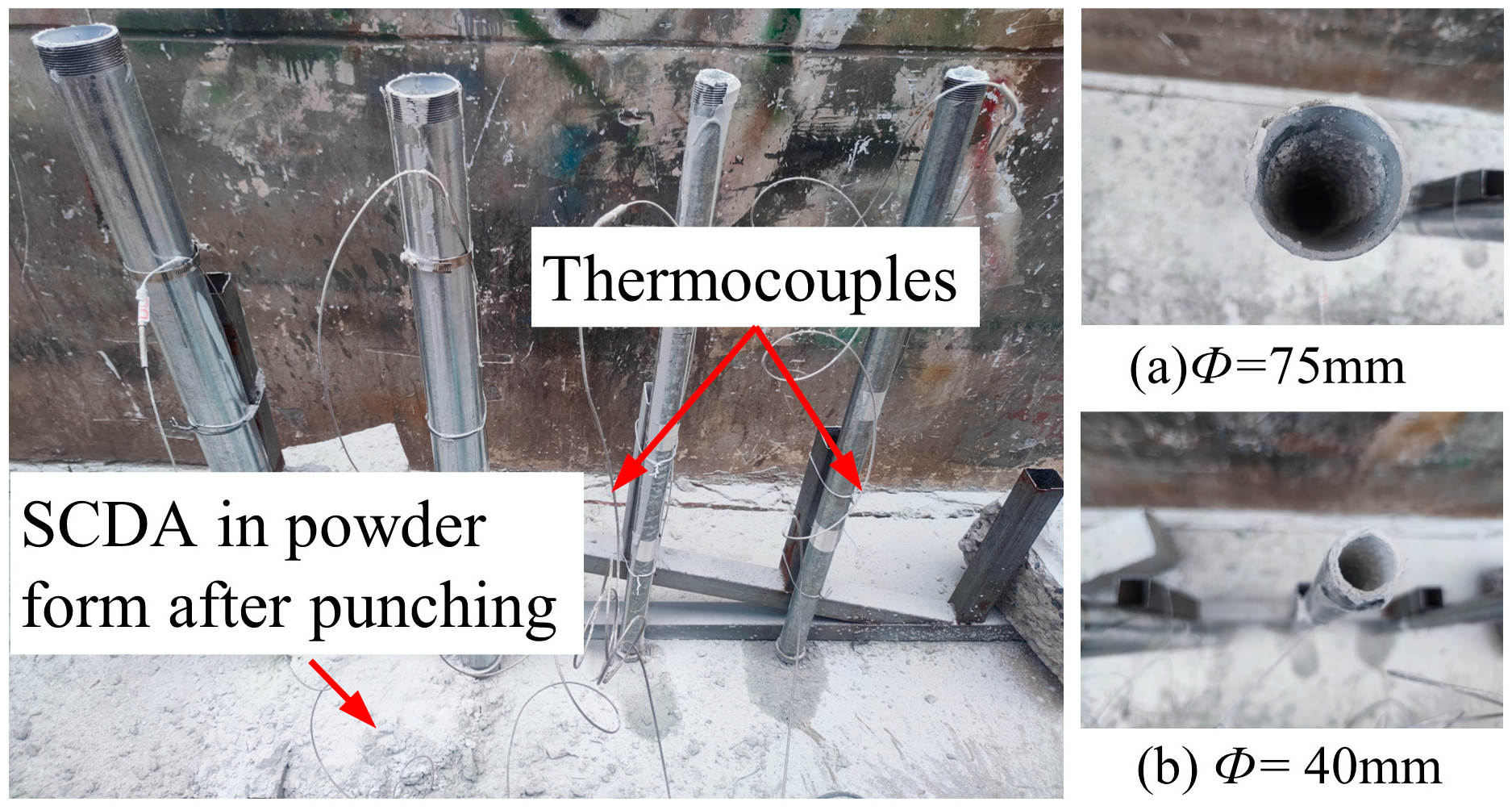
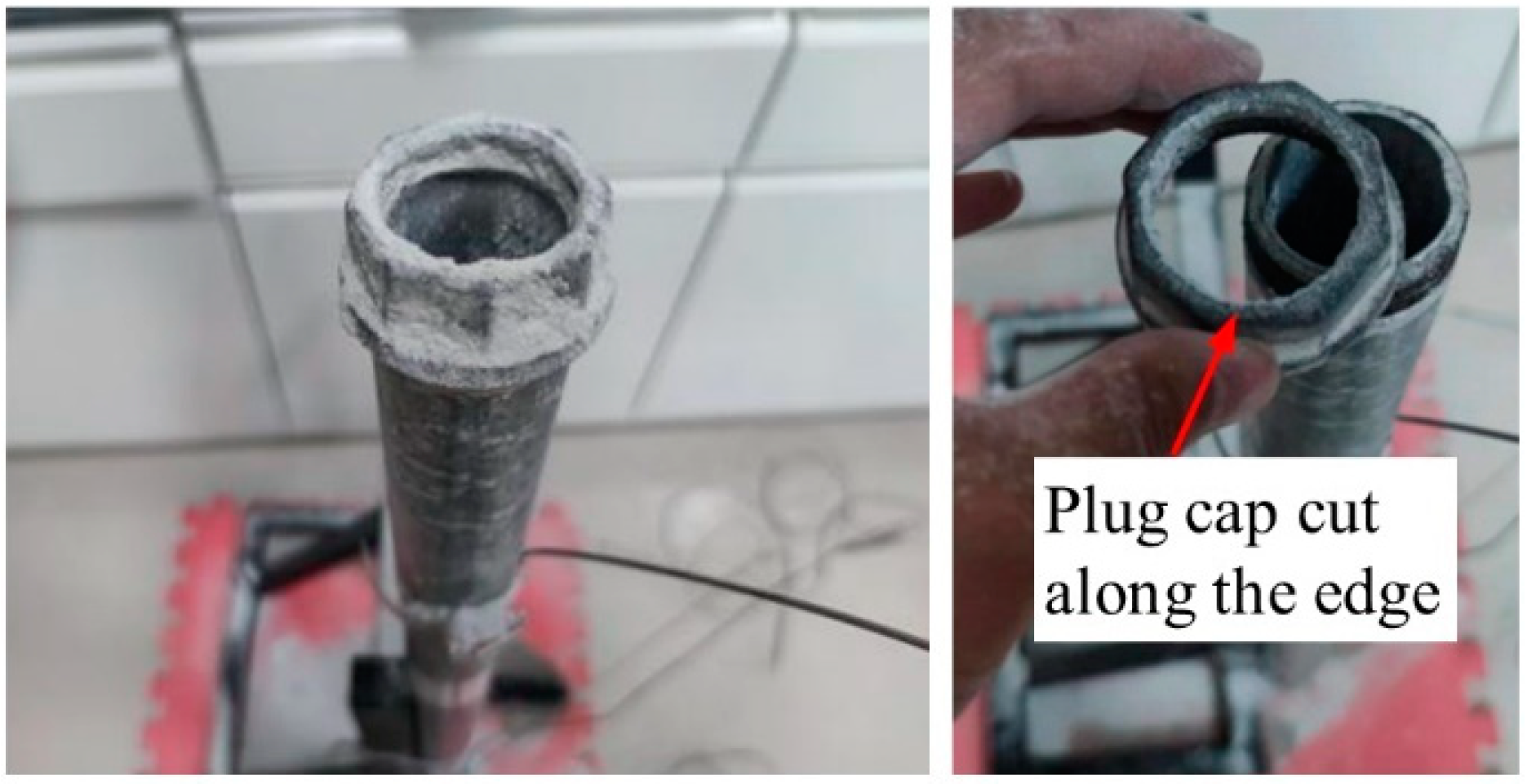

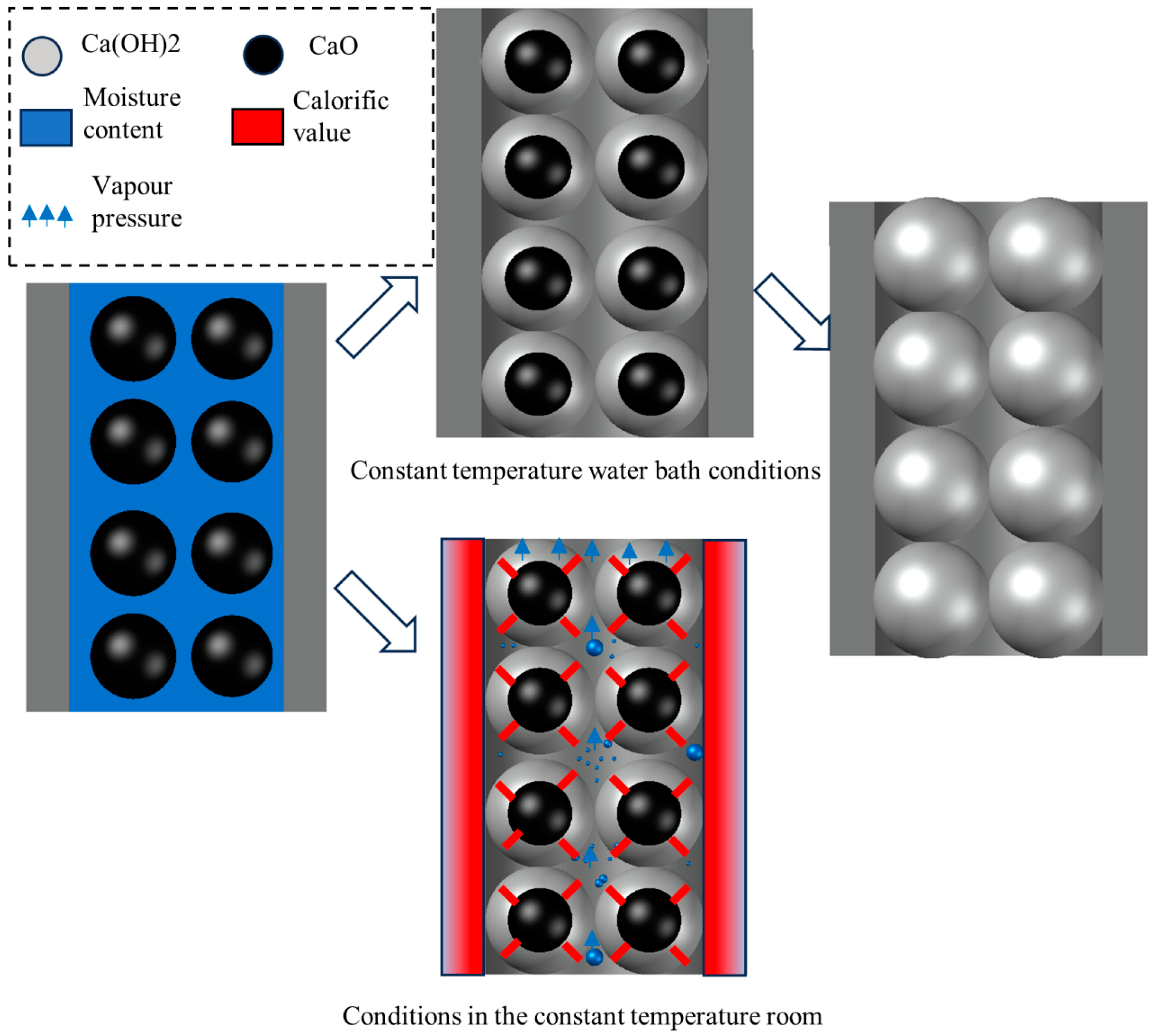



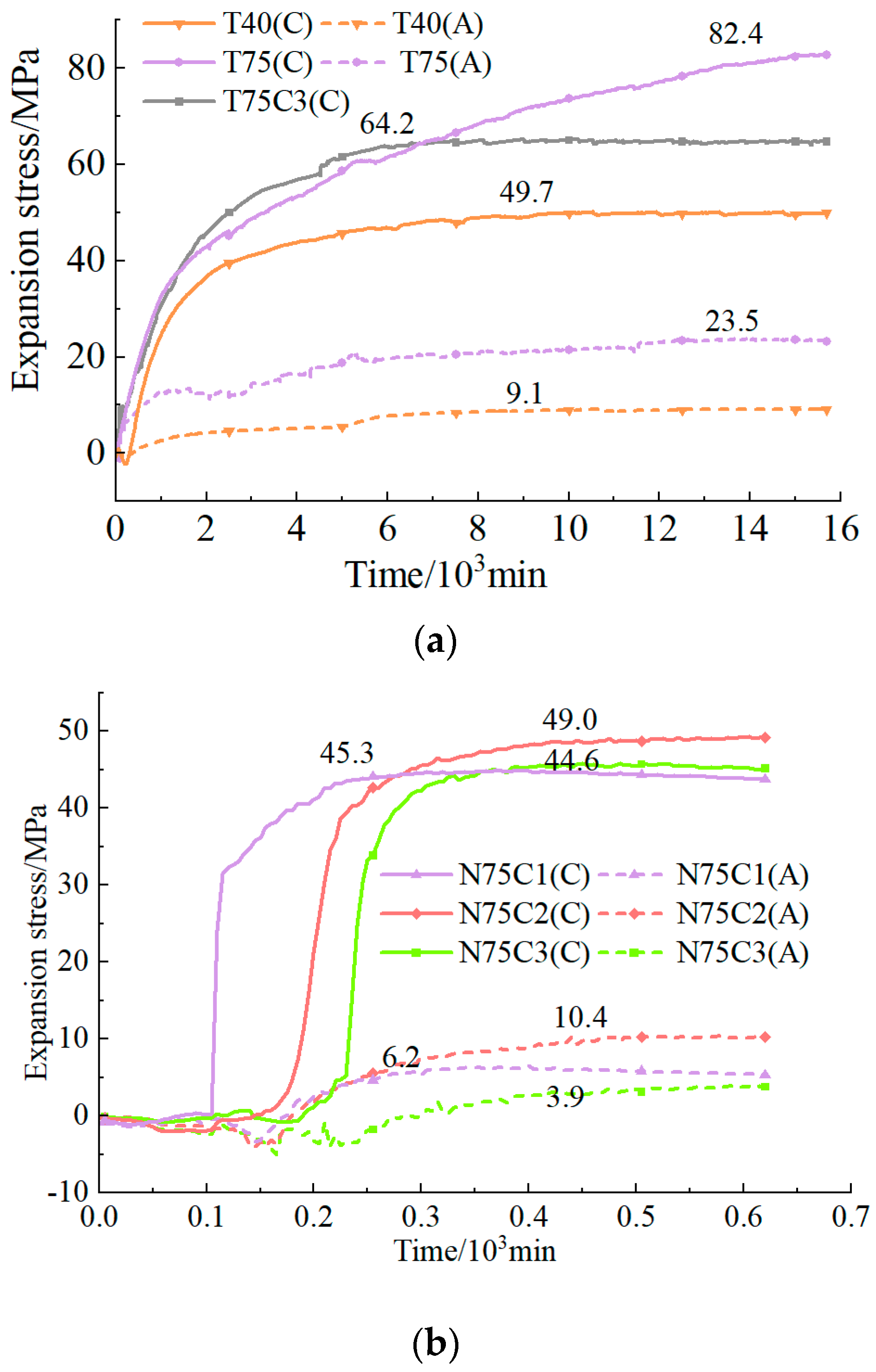

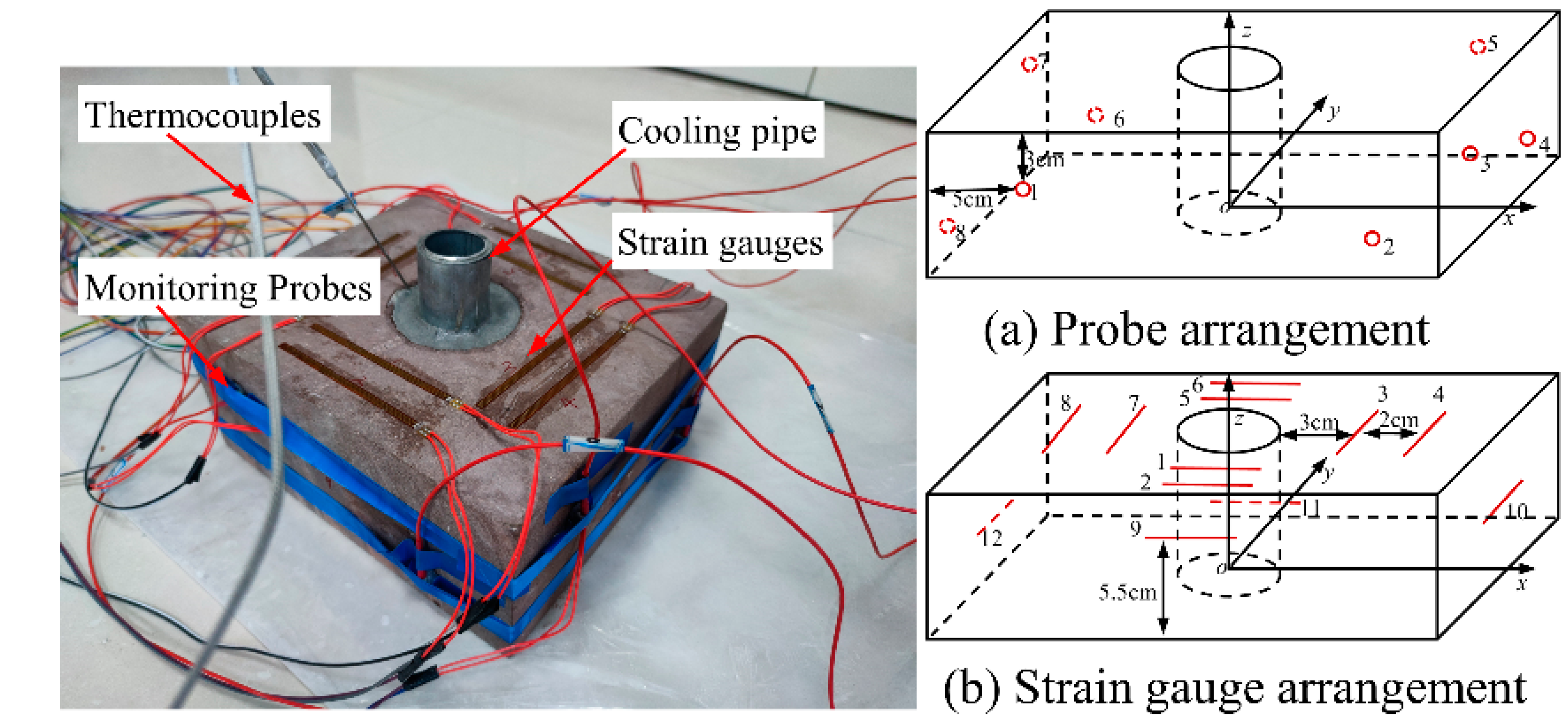

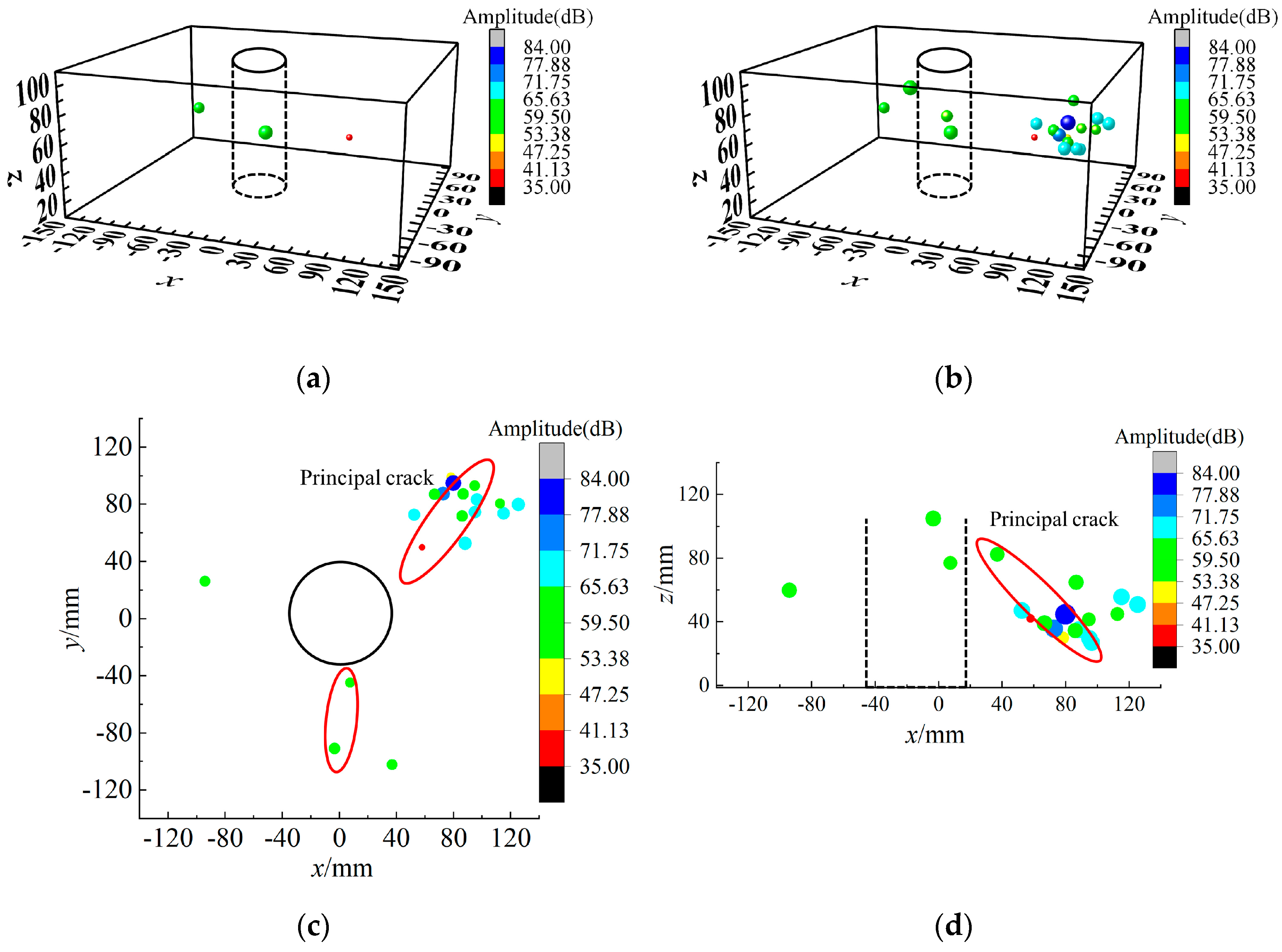


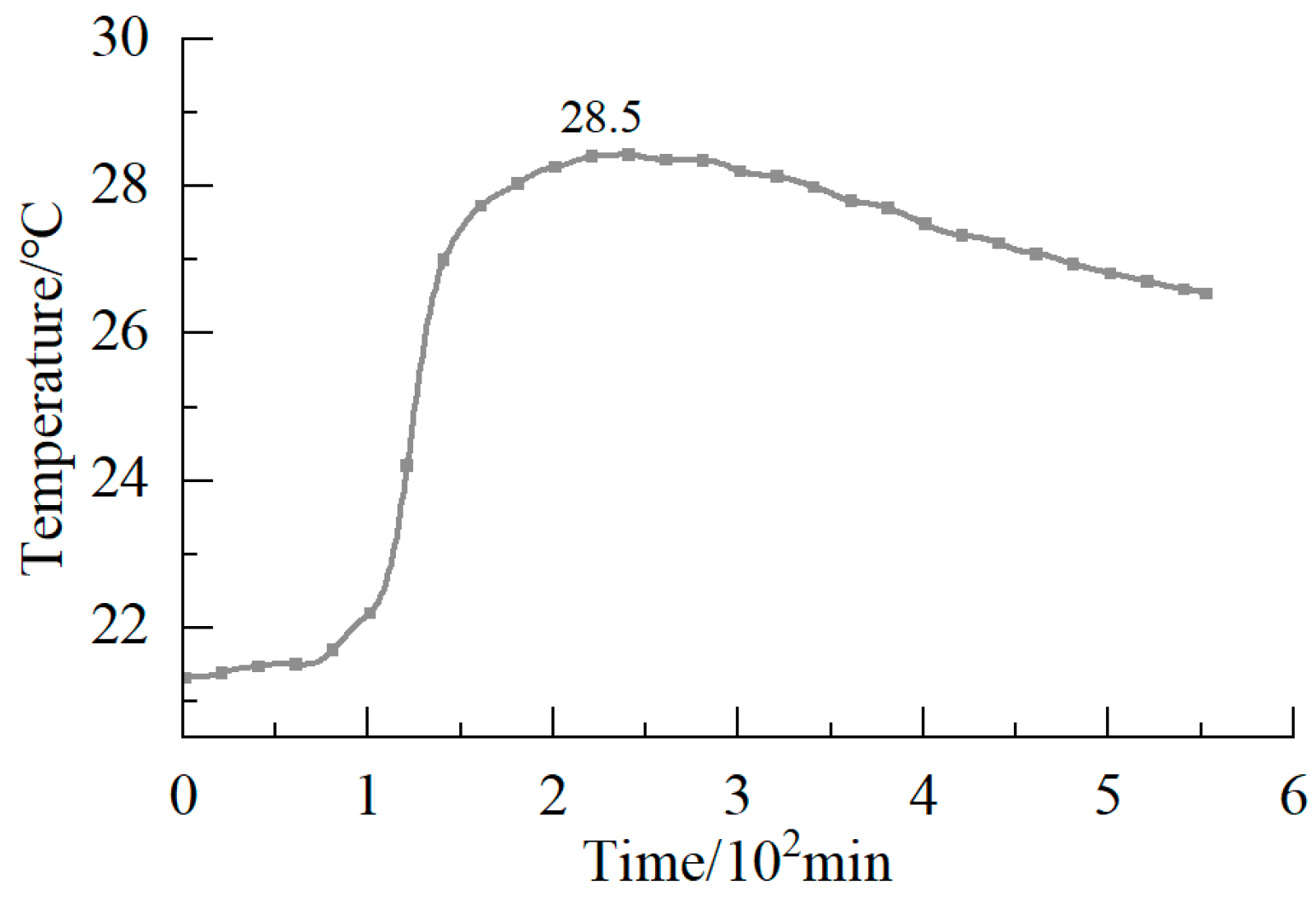
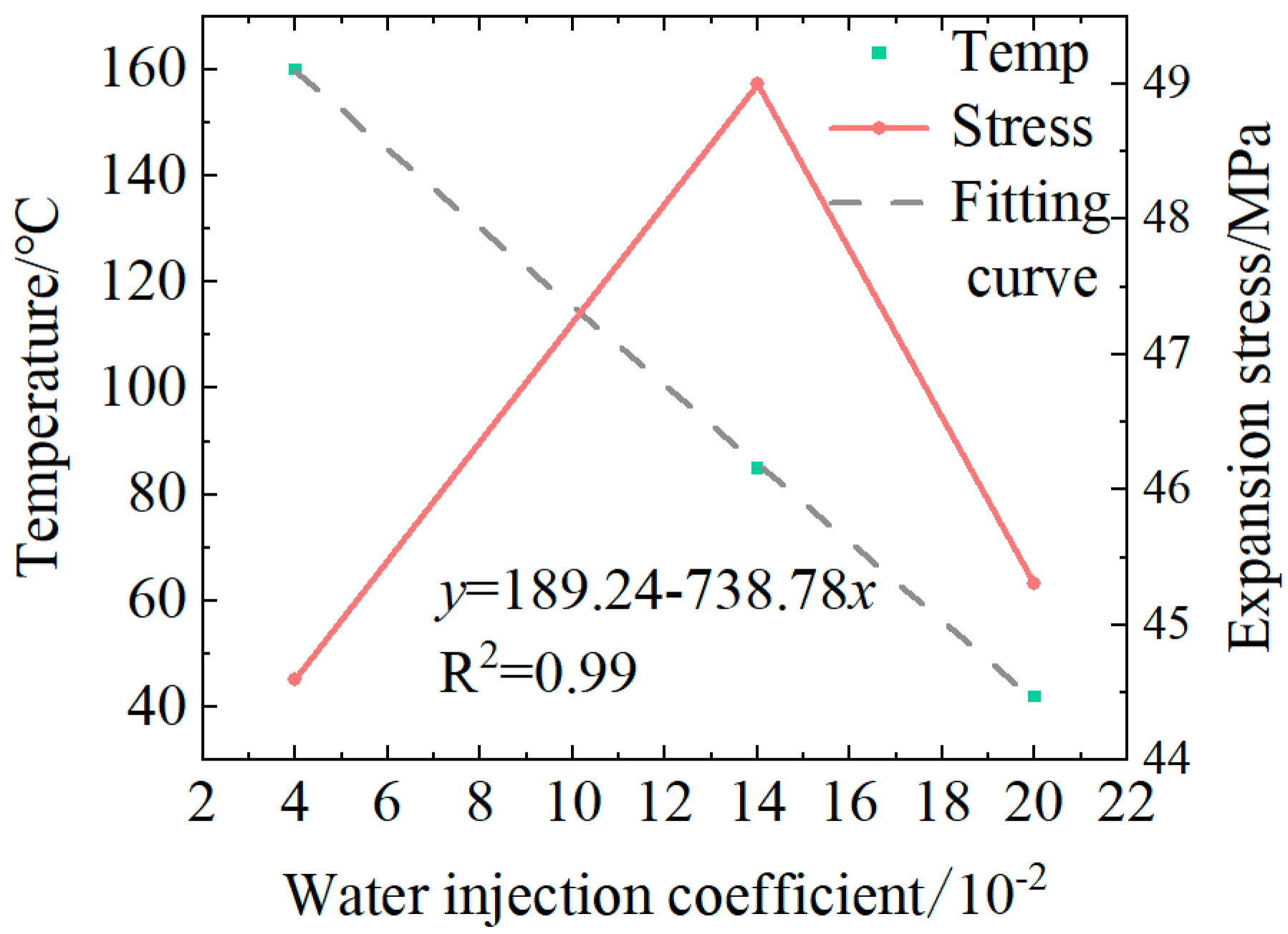
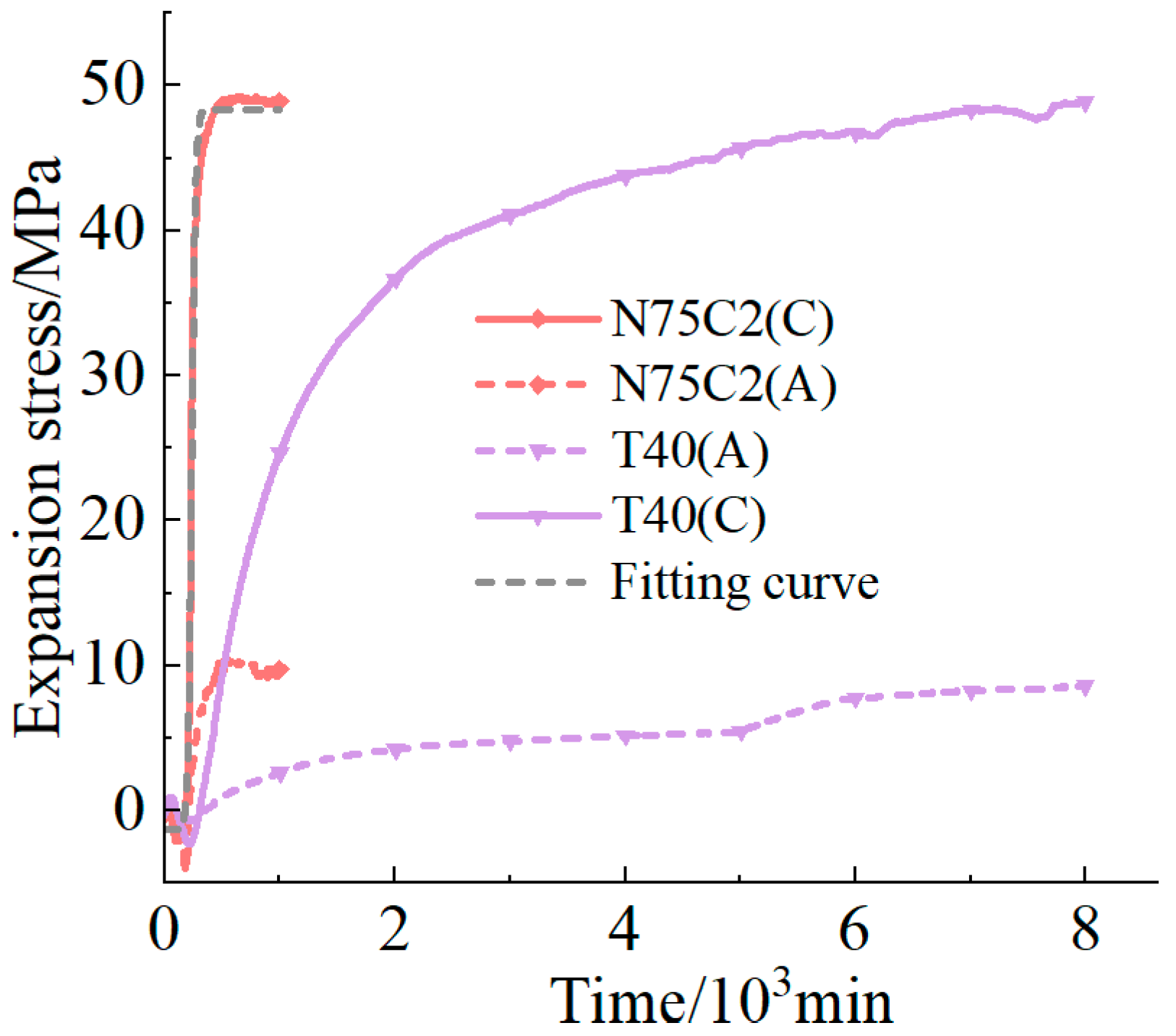
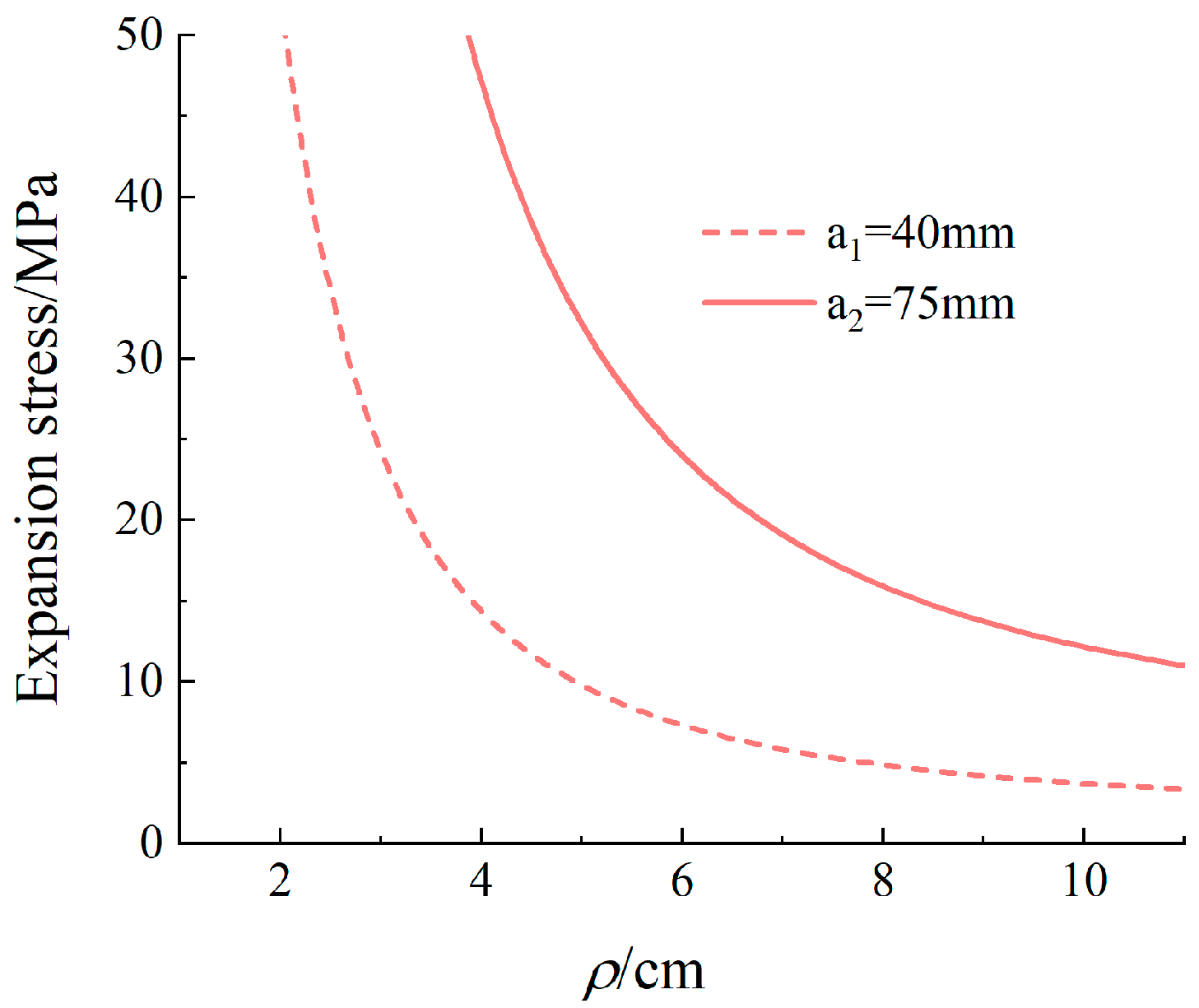
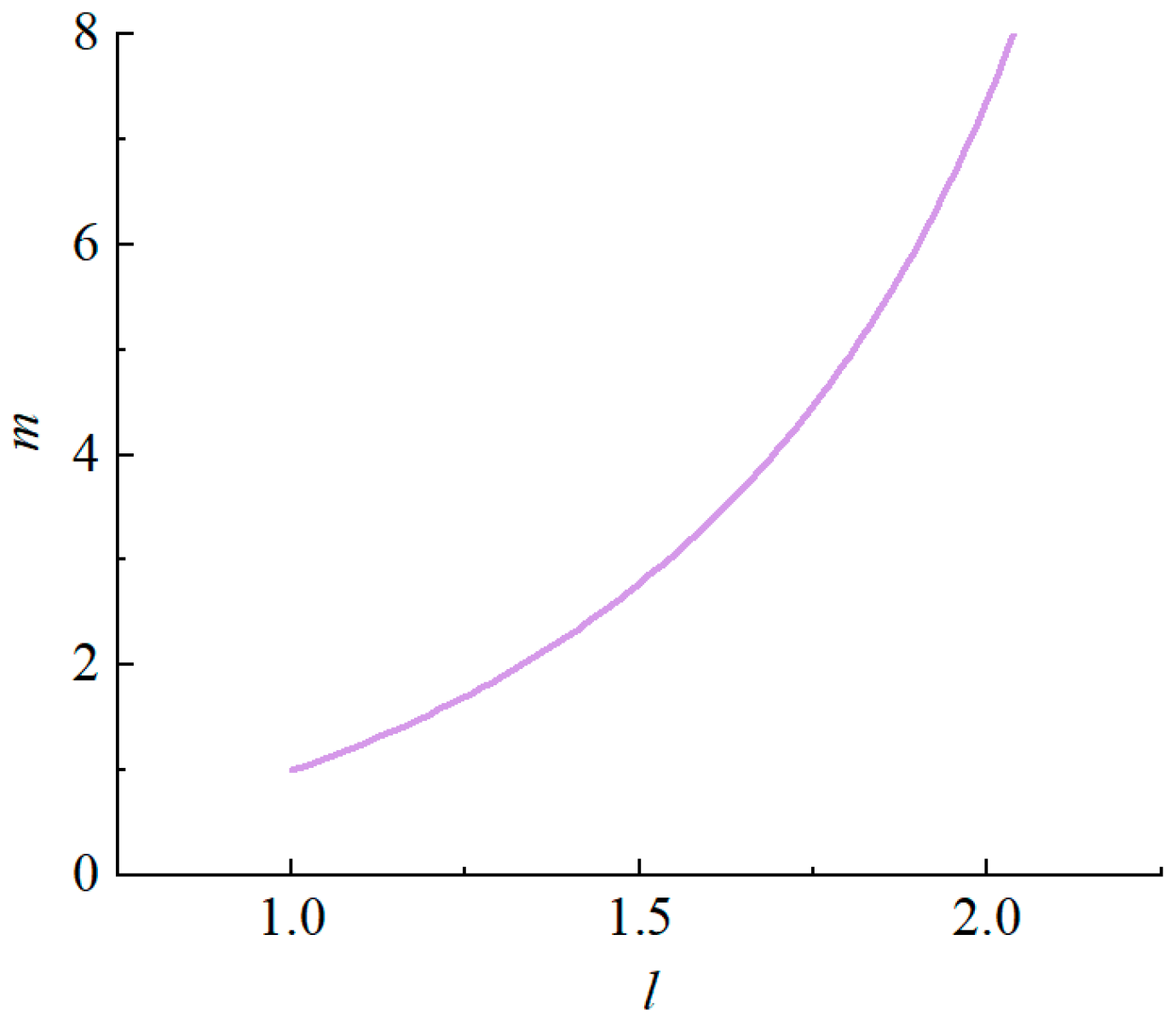
| Name | Outer Diameter/mm | Inner Diameter/mm | Water/cement ratio | Filling Height/mm |
|---|---|---|---|---|
| Cooling pipe | 5.62 | 2.33 | / | 1000.00 |
| Testing steel pipes | 75.53 | 1.31 | 0.34 | 1000.00 |
| Serial Number | Inner Diameter/mm | Outer Diameter/mm | Cooling Pipe Inner Diameter/mm | Cooling Pipe Outer Diameter/mm | Filling Height/mm |
|---|---|---|---|---|---|
| T40 | 40 | 48 | / | / | / |
| T75 | 75 | 90 | / | / | / |
| T75C3 | 75 | 90 | / | / | / |
| N75C1 | 75 | 90 | 21 | 26 | 500 |
| N75C2 | 75 | 90 | 36 | 42 | 500 |
| N75C3 | 75 | 90 | 39 | 47 | 500 |
Disclaimer/Publisher’s Note: The statements, opinions and data contained in all publications are solely those of the individual author(s) and contributor(s) and not of MDPI and/or the editor(s). MDPI and/or the editor(s) disclaim responsibility for any injury to people or property resulting from any ideas, methods, instructions or products referred to in the content. |
© 2024 by the authors. Licensee MDPI, Basel, Switzerland. This article is an open access article distributed under the terms and conditions of the Creative Commons Attribution (CC BY) license (https://creativecommons.org/licenses/by/4.0/).
Share and Cite
Wu, J.; Dong, Z.; Yuan, R.; Xie, S.; Deng, J. Prevention of Blowout Tests in Large-Diameter Boreholes with Soundless Chemical Demolition Agents and Fracturing Characteristics of Hard Sandstones. Processes 2024, 12, 336. https://doi.org/10.3390/pr12020336
Wu J, Dong Z, Yuan R, Xie S, Deng J. Prevention of Blowout Tests in Large-Diameter Boreholes with Soundless Chemical Demolition Agents and Fracturing Characteristics of Hard Sandstones. Processes. 2024; 12(2):336. https://doi.org/10.3390/pr12020336
Chicago/Turabian StyleWu, Junjie, Zhuo Dong, Ruifu Yuan, Shuaishuai Xie, and Junhao Deng. 2024. "Prevention of Blowout Tests in Large-Diameter Boreholes with Soundless Chemical Demolition Agents and Fracturing Characteristics of Hard Sandstones" Processes 12, no. 2: 336. https://doi.org/10.3390/pr12020336




